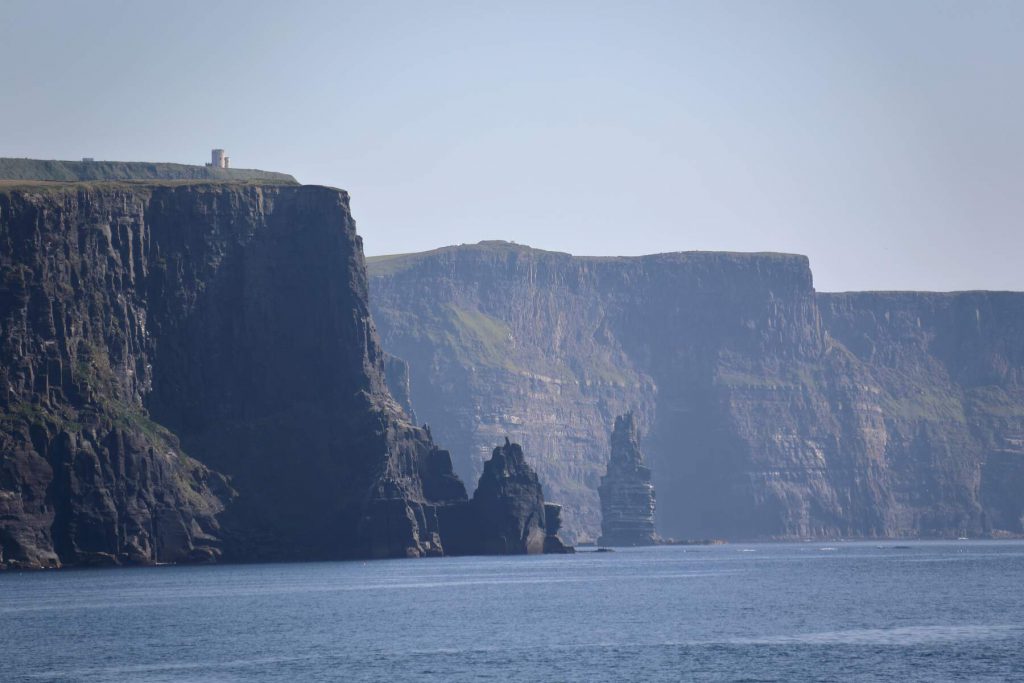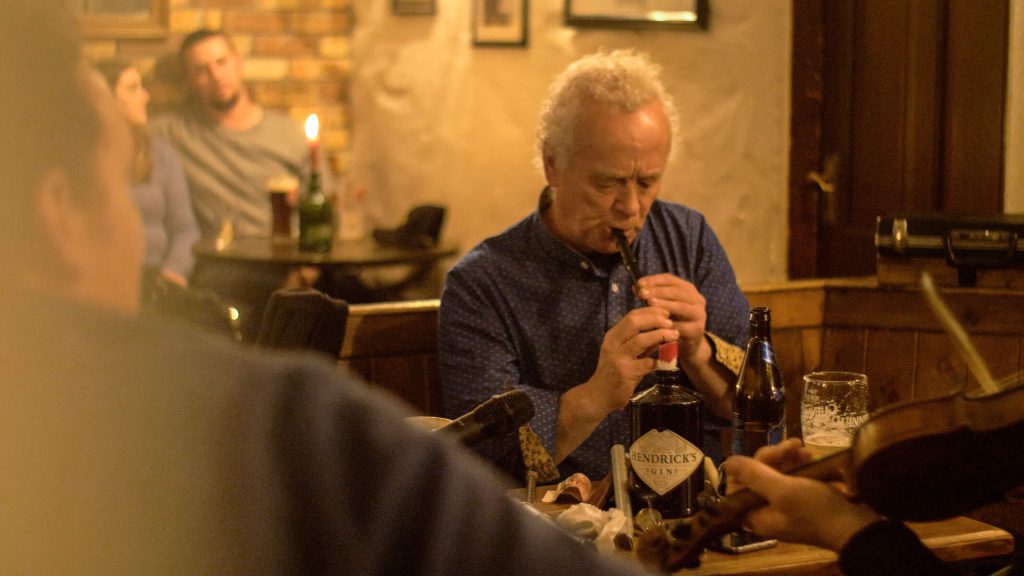
By Barry Coughlan
The spectacular Cliffs of Moher have had UNESCO Geopark status for over a decade and are a huge part of the tourism draw to the Banner County of Clare on the rugged west coast of Ireland.
It’s no surprise therefore that the Cliffs are Ireland’s most visited natural attraction. They stretch for 5 miles and reach 702 feet at their highest point north of O’Brien’s Tower, from where you can enjoy unrivalled views of the Atlantic Ocean.
Visitors get to have a unique experience midway along the sensational cliffs to explore the environmentally friendly Visitor Center and 800 meters of protected cliff side pathways and viewing areas.
As if that’s not enough to bring the visitors flooding in, Clare has a lot, lot, more.
In the northern part of the county, stretched across the landscape are the limestone pavements and curious rock formations of The Burren, one of Ireland’s most beguiling landscapes, with a unique ecosystem of native flowers and plants throughout a vast area of the province, about 100 square miles that stretches out as far as the Aran Islands.
The Burren National Park is located in the south eastern corner of the Burren and makes up approximately 3,800 acres bought by the Government for nature conservation and public access. It contains examples of all the major habitats within the Burren: Limestone Pavement, Calcareous Grassland, Hazel scrub, Ash/Hazel Woodland, Turloughs, Lakes, Petrifying Springs, Cliffs and Fen.
The word “Burren” comes from an Irish word “Boíreann” meaning a rocky place. This is an extremely appropriate name when you consider the lack of soil cover and the extent of exposed Limestone Pavement. However it has been referred to in the past as “Fertile rock” due to the mixture of nutrient rich herb and floral species.
Apparently a Cromwellian Army Officer named Ludlow once remarked: “of this barony it is said that it is a country where there is not water enough to drown a man, wood enough to hang one, nor earth enough to bury them. This last is so scarce that the inhabitants steal it from one another and yet their cattle are very fat. The grass grows in tufts of earth of two or three foot square which lies between the limestone rocks and is very sweet and nourishing.”
The Burren itself is free to visit, although there are a number of fee-paying attractions (e.g. the Aillwee Caves) where you’ll have to pay to enter.
It’s well worth taking the Burren scenic drive route that takes visitors into the heart of the National Park, with endless opportunities to stop off along the way to enjoy the views and visit the attractions.
Starting and ending in the beautiful fishing town of Ballyvaughan, one can complete the drive at slow or fast pace; some split it between several days, stopping off in various villages along the way to take on a hike.
The village of Fanore is a popular stop off point in the Burren, and Fanore Beach is among its biggest draws. It’s as much a popular spot for surfing and water sports as much as lazing around and cooling off in the safe waters that are summer patrolled by lifeguards.
Fanore village is home to a lively pub and restaurant scene, so after a hard day of relaxing on the beach, you’ll also have a superb place to sink a pint or two over a good meal.
Add its collection of villages famous for their traditional music and a community committed to sustainability, and it’s no wonder The Burren was announced as the winner of the Irish Times’ Best Place to Holiday in Ireland 2022 competition.
For many USA visitors, Irish holidays begin at Shannon Airport, long a favorite of my family for departures Stateside, as much for its ease of access – from our home in Cork and all points southwest and west, as for its uncluttered terminal building that allows for a relaxing rather than chaotic departure experience.
Dublin Airport has more choice but also a lot more customers; too many for some of us country folk used to less stressful aviation experiences in more people-friendly Cork or Shannon.
Anyway, for those arrivals wishing to take in the sights and sounds of Dublin – a mandatory experience for all – the capital isn’t that far away from any point south, west or north of the island of Ireland.
From Shannon, the wondrous beauty of Clare is on the doorstep, and there’s easy access to a number of other easy-going counties where life can be anything you want of it, but rarely fast-lane stuff.

Venture through the seaside towns in West Clare from Doolin to Kilkee and Lisdoonvarna. You could hike hidden trails through stunning landscapes and cruise the majestic Shannon at Killaloe, enjoy traditional music, legendary pubs and Bunratty Castle – don’t forget Bunratty – and great restaurants with menus sourced from nearby farms.
Deep in the heart of the Burren, the spa town of Lisdoonvarna is worth a visit. Don’t forget too that September, right up to the 30th of this month is Lisdoonvarna Match-Making Festival time.
If you’re jaded with speed dating and disenchanted with online dating sites, consider heading down to the peaceful spa town.
Each September, it attracts around 40,000 hopeful singletons in search of true love!
Aside from that, one could take a relaxing bath in one of the beautiful springs and soak up the therapeutic mineral water, a true bucket list experience.
Take some time out to enjoy the delights of Corofin, stroll along the peaceful country roads and spot the turloughs (disappearing lakes) dotted throughout the area. Another option is to find the quaint village of Kilfenora in north County Clare, it’s the gateway to the enchanting Burren region but made famous by the treasured songs of the Kilfenora Céilí Band founded over 100 years ago.
Get up close with fascinating underwater creatures such as sharks, rays and conger eels at Lahinch Seaworld and Leisure Complex in County Clare. Perfect your swing at one of two incredible golf courses and explore the ruins of historical Dough Castle, built in 1422.
Journey to Killaloe and admire its beautiful setting on the River Shannon. Joined by a 13-arch stone bridge to its twin town of Ballina, follow the river upstream and explore the bustling marina.

Then there’s Doolin, a lively village on the Atlantic Coast. Drop by Doolin Cave and see the high (23 feet) Great Stalactite, the longest free-hanging stalactite in the Northern Hemisphere. Travel to the Aran Islands by ferry, and enjoy the Cliffs of Moher from the sea. (www.doolinferry.com)
The scenic Kilkee (famous as a summer residence to thousands from Limerick) has a golden Blue Flag beach and a lovely cliff walk.
Perched 90 meters above the Atlantic Ocean, Loop Head lighthouse in west Clare has stood guard over this spectacular promontory for over 340 years.
The lighthouse station is the major landmark on the northern shore of the Shannon River. Its cliff top position affords 90-meter-high views of the sea down to Kerry Head and Dingle across the Shannon and up the Clare coast and to the Cliffs of Moher in the north.
Clare is one of a number of Irish Counties that’s near impossible to do justice to in a 1,300 word article, so believe me when I say that this description could best be described as a taster with more to come.
To put more clarity on it: Clare is the seventh biggest County in Ireland and yet has just a population of just about 200,000. I’ve been here and there over half a century but there’s more I want to discover.
Visitors will have plenty of space in which to explore and probably the best advice I could offer is – give yourself time, don’t skirt the county and don’t rush a way through it.
You won’t be disappointed!
Useful information at www.clare.ie, www.discoverireland.com and www.clare-tour.com
